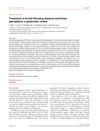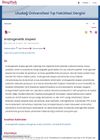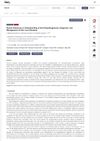26, 6 month progress on dut + min Progress Pictures 8/19/2025
The user shared their 6-month progress using oral dutasteride and minoxidil for hair loss, noting improvements without significant side effects. They currently use 0.5mg oral dutasteride, 5mg oral minoxidil, 5% topical minoxidil, and ketoconazole shampoo twice a week.
View this post in the Community →
Similar Community Posts Join
6 / 1000+ resultscommunity Please listen. If you want to save your hair.
User discusses two medications for stopping hair loss: Fin (finasteride) and Dut (dutasteride). Mixed experiences and side effects are shared, with some users seeing positive results.
community My journey from Norwood 3.5/4 to Norwood 0
A user's hair regrowth journey involved a hair transplant and using RU58841, finasteride, and minoxidil, with side effects managed by other medications.
community Dutasteride + Minoxidil Worked—Then Developed a Minoxidil Allergy. Hairline Getting Worse. Any Advice?
Dutasteride and minoxidil initially stopped hair loss, but a minoxidil allergy led to hair thinning. Alternatives suggested include oral minoxidil, microneedling, and ketoconazole shampoo while continuing dutasteride.
community 3 month progress – dut, oral minox, ketoconazole shampoo, ru58841, dermarolling. Wet hair same lighting
A three-month progress report of using Dutasteride, oral Minoxidil, Ketoconazole shampoo, RU58841 and Dermarolling to combat hair loss. The results have been encouraging so far.
community New Latanoprost-Based Formula Used by Hollywood Celebrities
A new Latanoprost-based formula used by Hollywood celebrities to treat hair loss, with the formula containing minoxidil, tretinoin, melatonin, azelaic acid, zinc thymulin, vitamin B6, sandalore and methyl vanillate. It also mentions the potential of offering a combined sublingual minoxidil/oral dutasteride option in the future.
community Anyone else not have hobbies anymore because of this?
The user is expressing an obsession with hair loss and spends all their time researching and discussing it. Other users suggest seeking therapy and focusing on other aspects of life.
Related Research
6 / 1000+ results
research Relative Efficacy of Conventional Monotherapies and Select Nonconventional, Over-The-Counter Products for Male Androgenetic Alopecia: A Network Meta-Analysis Study
Conventional treatments like dutasteride and minoxidil are effective for male hair loss, with some alternative treatments also showing promise.

research Treatment of Frontal Fibrosing Alopecia and Lichen Planopilaris: A Systematic Review
No effective treatment for frontal fibrosing alopecia was found, but oral 5-alpha-reductase inhibitors had the best response; for lichen planopilaris, topical corticosteroids were commonly used but had a high relapse rate.

research A Canadian Consensus on Androgenetic Alopecia: Approach and Management
Experts recommend specific treatments like minoxidil and finasteride for managing hereditary hair loss.
research Male Androgenetic Alopecia
Male pattern baldness worsens with age and can be treated with medications like minoxidil and finasteride, but side effects and personalized care are important.

research Androgenetic Alopecia
The review provided information on various treatments to stop hair thinning and increase hair density in people with common genetic hair loss.

research Recent Advances in Understanding of the Etiopathogenesis, Diagnosis, and Management of Hair Loss Diseases
New understanding and treatments for hair loss are improving, but more research is needed.